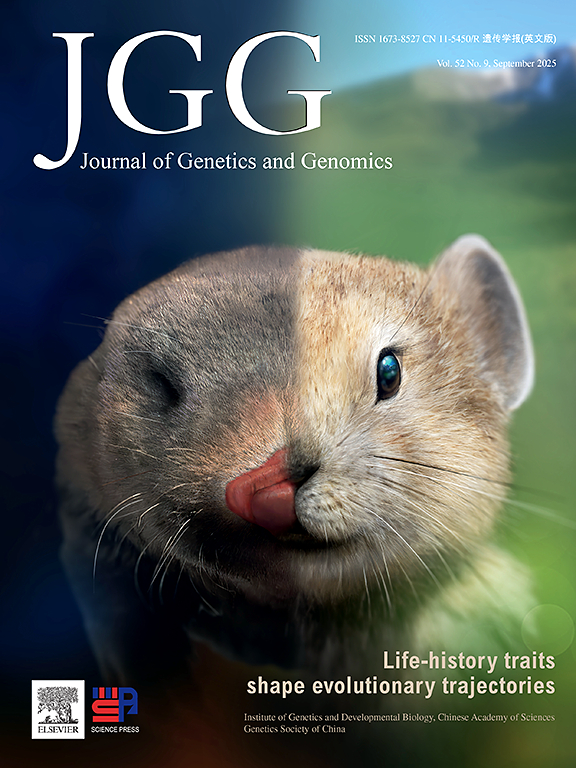2013, 40(6): 297-306.
doi: 10.1016/j.jgg.2013.04.008
Abstract:
At least 25 genes, many involved in trafficking, localisation or shaping of membrane organelles, have been identified as causative genes for the neurodegenerative disorder hereditary spastic paraplegia (HSP). One of the most commonly mutated HSP genes, atlastin-1, encodes a dynamin-like GTPase that mediates homotypic fusion of endoplasmic reticulum (ER) membranes. However, the molecular mechanisms of atlastin-1-related membrane fusion and axonopathy remain unclear. To better understand its mode of action, we used affinity purification coupled with mass spectrometry to identify protein interactors of atlastin in Drosophila. Analysis of 72 identified proteins revealed that the atlastin interactome contains many proteins involved in protein processing and transport, in addition to proteins with roles in mRNA binding, metabolism and mitochondrial proteins. The highest confidence interactor from mass spectrometry analysis, the ubiquitin-selective AAA-ATPase valosin-containing protein (VCP), was validated as an atlastin-interacting protein, and VCP and atlastin showed overlapping subcellular distributions. Furthermore, VCP acted as a genetic modifier of atlastin: loss of VCP partially suppressed an eye phenotype caused by atlastin overexpression, whereas overexpression of VCP enhanced this phenotype. These interactions between atlastin and VCP suggest a functional relationship between these two proteins, and point to potential shared mechanisms between HSP and other forms of neurodegeneration.







